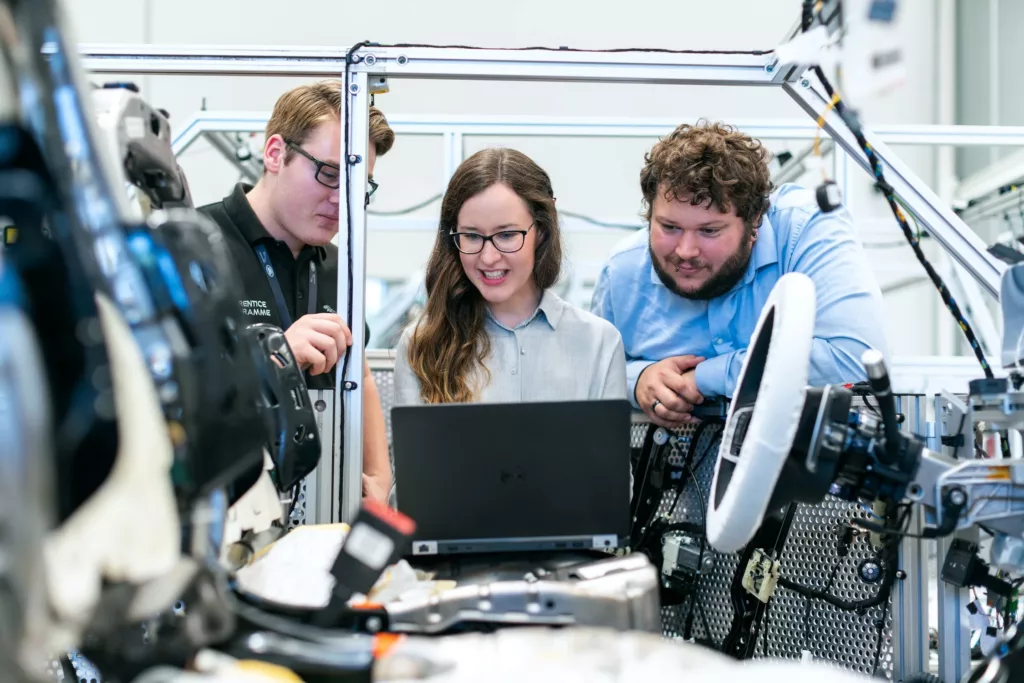
Running a successful business often requires making strong decisions quickly and striving for constant improvement. One tool that has been used to get ahead is rapid prototyping, which empowers businesses with the ability to create quick iterations of products or designs cost-effectively.
Getting the expertise of prototype companies can be helpful for businesses looking to innovate. Such companies only offer specialized knowledge and resources and thus allow businesses to create top-quality prototypes more quickly and efficiently.
From automotive manufacturing to the medical sector, there are many different industries taking advantage of rapid prototyping’s considerable benefits. In this blog post, we will look at six industries leveraging rapid prototyping to maximize success now and in the future.
Automotive Industry
The global rapid prototyping material market is expected to grow up to $1,496.7 million by 2028 with a CAGR of 17.2%. One of the most remarkable uses of rapid prototyping technology has
been noticed in automotive manufacturing. This sector is evolving at an incredible pace, with new technologies changing how cars are designed and constructed.
This technology enables manufacturers to quickly and precisely produce vehicle parts and interior design elements using sophisticated machines capable of creating intricate shapes with extreme accuracy.
Car companies using rapid prototyping can speed up development times and cut costs significantly while producing components with greater strength and durability than ever before. Be it an elegant dashboard or another engine part – rapid prototyping is transforming the automotive industry and leading to more effective and innovative processes and results in the future.
Aerospace Industry
Rapid prototyping technology has revolutionized the aerospace industry over the years. Through rapid prototyping, aerospace engineers can now create lightweight aircraft components that are both aerodynamic and require minimal maintenance – changing this sector and leading to sleek and modern aircraft with improved efficiency.
Rapid prototyping remains an invaluable resource for engineers as they push the boundaries of innovation in aircraft design and manufacturing – the sky’s the limit with this incredible tool.
Robotics Industry
Rapid prototyping technology has played an invaluable role in modernizing manufacturing with robotics, and its widespread usage is one of the many reasons. Thanks to rapid prototyping technology, robotic arms, sensors, and advanced circuit boards can be quickly created for any size machine, increasing productivity while decreasing labor costs and errors due to robotic systems’ precision. Future innovations may even allow more complex and sophisticated robots.
Medical Device Industry
The groundbreaking rapid prototyping technique allows manufacturers to design complex devices like prosthetics and hearing aids faster and with greater precision than ever before. Utilizing 3D printing technology and other advanced innovations, tasks that once took weeks or months can now be accomplished in just days.
Rapid prototyping offers several advantages for patients and healthcare providers alike, as it expedites the delivery of their customized devices more rapidly while increasing efficiency and cutting costs. As technology evolves and rapid prototyping continues to break ground in the medical industry, people can expect even more exciting advances over time.
Telecommunications
Rapid prototyping has quickly become an integral component of modern telecom, enabling companies to develop and manufacture innovative technologies efficiently and cost-effectively. As global connectivity demands continue to rise, rapid prototyping has proven itself a vital element in creating new telecom apps and applications.
Traditional manufacturing can be an extensive and costly process that impedes progress for new projects. Rapid prototyping provides companies with an alternative that quickly transforms ideas into tangible prototypes which can then be further developed and refined – as well as helping to identify any flaws early in the development process to avoid costly errors later on.
Rapid prototyping technology also provides companies with greater design flexibility, as new designs can be quickly tested and altered without too much hassle. It also enables telecom companies to produce prototypes within hours or days rather than weeks – an invaluable asset in an industry that demands speedy solutions.
Military Industry
Rapid prototyping has quickly become an invaluable asset to the military industry due to its ability to rapidly design and produce equipment that meets stringent military specifications efficiently and cost-effectively.
Rapid prototyping offers numerous advantages, one being its ability to ensure products meet durability standards for military applications.
One of the main benefits of rapid prototyping is its ability to ensure that products meet the necessary durability standards for military applications. Military equipment must withstand extreme conditions, from exposure to harsh environments to intense usage during combat situations. Rapid prototyping allows for testing in these conditions, which ensures that the finished product will be able to meet the rigorous demands of military use.
Functionality is another crucial attribute that is essential in military gear. Rapid prototyping allows for constant adjustments and improvements during the design process, leading to an end product that not only meets all necessary specifications but is also efficient and highly effective. It enables continuous adjustments that ensure its success in fulfilling these duties.
Final Words
Rapid prototyping has increased creativity and productivity within various industries, helping manufacturers accelerate development cycles while turning ideas into reality faster than ever. Due to its limitless capacity for innovation, rapid prototyping will continue its rapid spread into new fields – becoming commonplace over time.